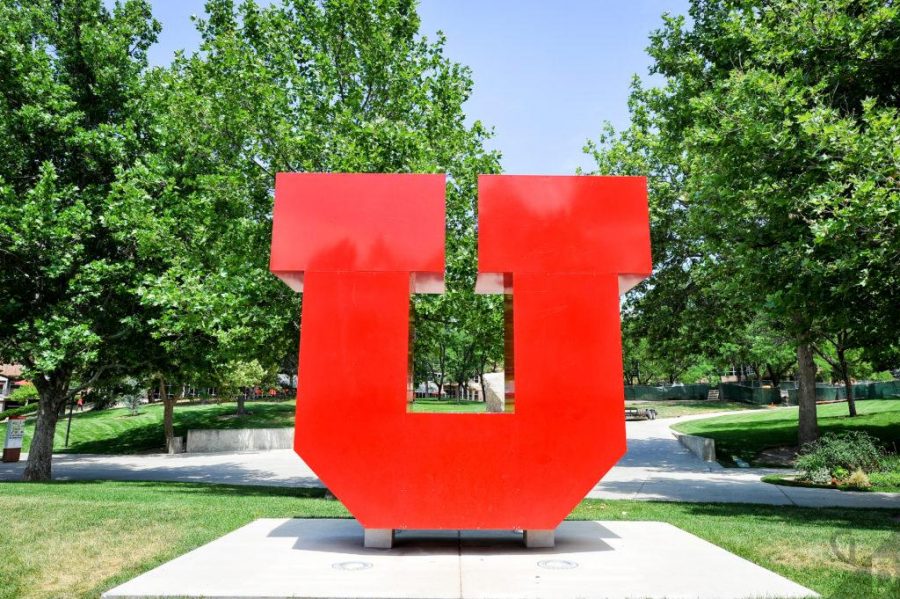Mendenhall: ‘Sticker Price’ College Tuition Hurts Students
The Block U on the University of Utah Campus, Salt Lake City, UT on Wednesday, July 12, 2017. (Photo by Adam Fondren | The Daily Utah Chronicle)
May 3, 2022
It’s no secret that college tuition prices are rising. While some colleges fight tuition increases, others lean into it. For example, Colorado State University’s tuition will increase about $208 each semester, and other universities are following suit.
Here at the University of Utah, now is a crucial time in the decision-making process as prospective and current students decide to apply for a degree or continue towards one. Yet even with substantial research, it’s hard for students to track down a semesterly or yearly total cost for tuition that matches the advertised “sticker price.”
College sticker prices refer to the total yearly cost of a college or university. Sifting through numerous websites and financial aid calculators is tiring and unnecessary, and with tuition costs steadily rising, sticker prices mislead and discourage students from pursuing a higher education.
Transparency with Tuition
The difference between sticker and net prices of college tuition is immense. Found on college websites, sticker prices factor in additional fees like parking permits, meal plans or room and board. Many colleges are not accurately factoring additional costs into their advertised sticker price, which results in staggering unexpected fees. Confusion is common among students who see their net price breakdown.
When applying to the U, I investigated extra charges listed on my tuition statement that didn’t reflect the sticker price I originally saw. And if I’ve experienced this, so have other students. The stress I experienced while trying to anticipate how much financial aid I would need was overwhelming. I could not get a consistent number.
The lack of transparency between colleges and their students is damaging, and the process of calculating tuition is much more difficult than it needs to be. Promoting more transparency around college tuition would benefit all students at the U.
Transparency at the U
Wellesley College Professor Phillip Levine educates students and their families about this inherent tuition crisis in his book “A Problem of Fit.” The book examines how tuition transparency is part of the problem regarding misleading cost information surrounding colleges.
The U currently sits right under 50% “full need” status, meaning that only 50% of students are paying sticker price tuition. Advertising a lower sticker price online can be an effective way to meet in the middle and provide more transparency overall. Continuing with the current lack of transparency puts everyone in a lose-lose situation, as students lose out on having a higher educational experience and universities lose out on an influx of incoming students. This in turn will decrease diversity and representation throughout the community at large. The American Council of Trustees and Alumni found that with each $1,000 raise of tuition, the ethnicity rate of freshman will drop an estimated 4.5%. As a campus that encourages inclusion and diversity, a drop in representation would greatly affect the U.
What the U Can Do
The 568 Presidents Group is a group of colleges and universities across the country who admit students on what they call a “need-blind” basis. The group essentially helps the financial aid process for their respective colleges stay fair and equal throughout. They aim for transparency with college pricing, and are certainly moving in the right direction towards helping their students. The U should consider bridging the gap and joining the 568 Presidents Group, as it could greatly benefit from keeping a simplified and uniform need-based financial aid system for all students.
The U should increase transparency in tuition prices for their students. Working towards more affordable and fair prices is possible through groups like the 568 Presidents Group. Joining the 568 Presidents Group should be something that our school leadership discusses as soon as possible. Bringing attention to these widely experienced issues, like sticker price inaccuracies, can help prevent them in the future. Times are changing, and colleges need to address their failures while adapting and overcoming them at the same time.








